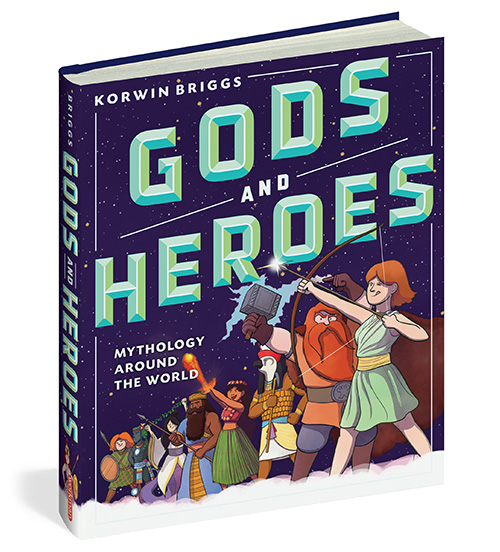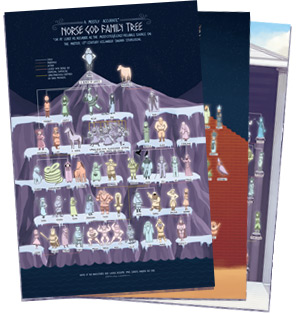Management Secrets of Genghis Khan
Genghis Khan was so much worse than I ever expected. Everything I drew here is based on something he actually (reportedly) did, and these are just the things I felt comfortable drawing. It gets so much worse. But without further ado,
The Actual Events This Comic Is Based On:
Panel 1: The guy who shot Genghis Khan was named Zurgadai. The story goes that, after winning a battle, the Khan rounded up his surviving enemies and demanded to know who’d managed to shoot him. In what has got to be the ballsiest move I’ve ever heard of, Zurgadai admitted that he had, and Genghis Khan honored his honesty by letting him live and renaming him Jebe, which means “arrow.” And Jebe-formerly-Zurgadai went on to become one of his best generals, eventually conquering a good chunk of Central Asia and Eastern Europe.
Panel 2: You might have heard about the mongols wiping the floor with every settled society they came across. What you might not have thought of was how hard it would be to wipe the floor with anyone when they’re hiding behind a big stone wall. One way the mongols overcame this was by hiring (read: forcing) citizens from their previous conquests to do it for them. Sometimes this meant getting Chinese siege engineers to break the walls down. Sometimes this meant getting hordes of peasants to act as combination hostages/shock troops/human shields. I’ll say this for Genghis Khan, he got the job done.
Panel 3: If you’ve seen the first season of Game of Thrones, you might remember the part where Khal Drogo executes a guy by pouring molten gold on his head. Genghis Khan did it for real. But for what it’s worth, the guy was kind of asking for it. His name was Inalchuq, and he was in charge of an area of the Khwaresmian Empire (near modern-day Afghanistan). In 1218 CE, when a Mongolian trade caravan arrived in his territory, governor Inalchuq accused them of being spies, seized their goods, and killed them all except for one who managed to escape. When Genghis Khan heard about this, he sent some ambassadors to Sultan Muhammed (who, just to be clear, was not *that* Muhammed) demanding that Inalchuq be punished. In response, the Sultan had the ambassadors’ beards shaved off.
Sidenote: I think it’s really interesting how many different peoples in history took beard-shaving as a grievous insult. Like, I’ve seen it come up in classical societies, post-Roman “barbarian” kingdoms, steppe tribes, old germanic law codes, not to mention others I’m sure I’m forgetting. And it’s still kind of a thing – remember the FBI investigation into those Amish guys who were breaking into other Amish guys’ houses and shaving them?
Anyway. Genghis Khan was pissed, The Khwarazmian Empire was annihilated, and Inalchuq was executed with melted silver.
Panel 4: Genghis Khan killed a lot of people. Tons of people. World War II amounts of people. Like, enough people that he’d fit in into a list of major historical plagues. I remember reading somewhere that a Chinese census taken after he’d come through had 30 million fewer people than the one taken before. And he didn’t stop with China.
At a certain point, killing that many people becomes a serious logistical challenge. I can’t find it now, but somewhere in Dan Carlin’s hours-long podcast on the Mongols, The Wrath of the Khans he talks about some of the ways they’d deal with this. The most bizarre (I hesitate to call it my favorite) was the one depicted here, where they lined up former citizens of a recently-conquered city, and killed anyone who was taller than a horse-cart.
Panels 5 and 6: One of the most famous things about Genghis Khan was the way he dealt with cities he came across. He’d arrive and demand surrender, and the city had a choice. If they surrendered immediately, everyone was allowed to live, and they were (relatively) peacefully incorporated into Genghis Khan’s empire. If they waited until the next day to surrender, the Mongols would kill all the men, but the women and children were allowed to live. If they didn’t surrender within those two days, then regardless of what they did later, the Mongols would kill everyone, burn everything, and then return later to kill anyone they’d missed. No surprise that a lot of cities surrendered without a fight. And to his credit, Genghis Khan was famously good to his word, whether that was “I will let you live” or “I will burn everything you’ve ever loved.”
Panel 7 (the pile of bones): Here’s another example of me losing my source, but I’ve read this in multiple places so I’m sure it’s as true as anything else here. It comes from an account of some Turkish diplomats who were sent to seek an audience with Genghis Khan. As they approached the Chinese city he’d most recently conquered, they found mountains of human bones, ground that was so covered in grease and blood and dead flesh that their horses couldn’t walk over it, and air so thick with miasma that they could hardly breathe. I swear, the more I read about Genghis Khan, the more horrifying things become. Sauron’s got nothing on this guy. He makes Hitler look downright amateurish.
Man, why do I keep picking these morbid topics? I gotta go brighter next time. Maybe I’ll finish the Norse God Family Tree I’ve been kicking around. I mean, they’re violent, too, but at least they’re cartoonish about it.
Oh, and before I forget, I’m down to one history book and I can’t stand only reading one at once, so..does anyone have any recommendations? If you do, please send them to me! VeritableHokum (at) gmail (dot) com. I’ll be really grateful, and I’ll reply with thanks and maybe even some bad puns.
~Korwin



